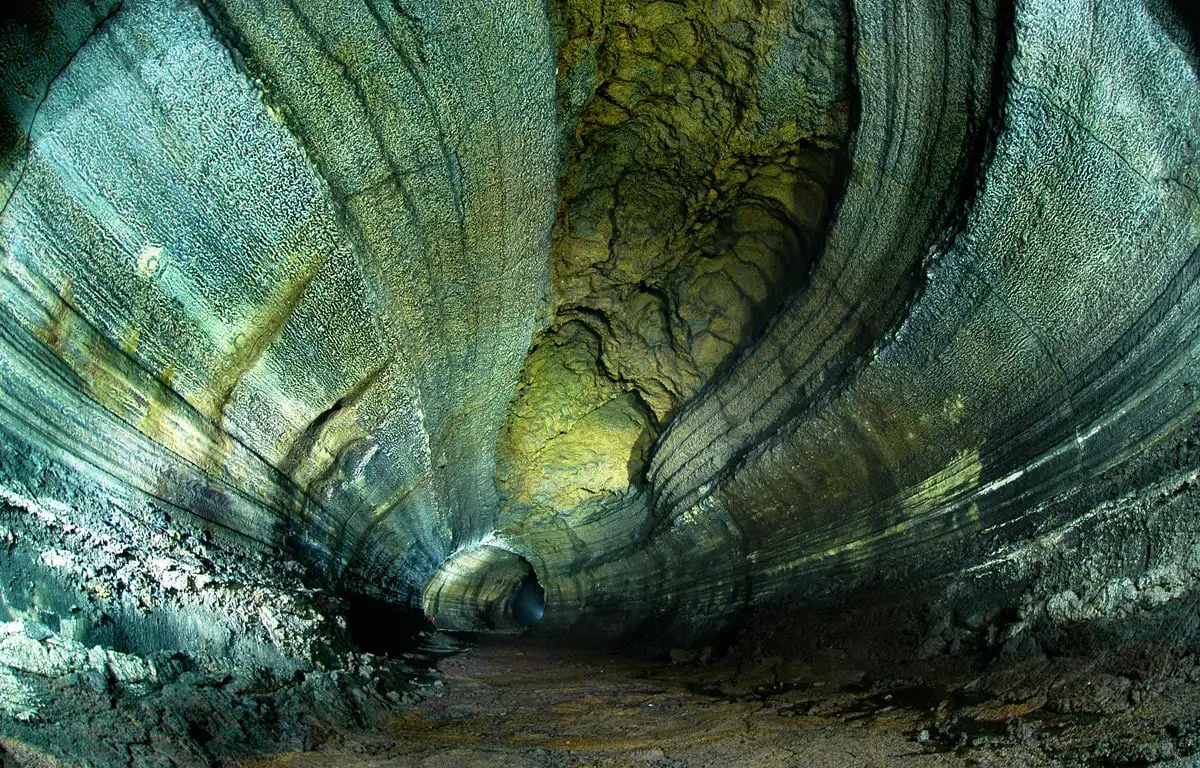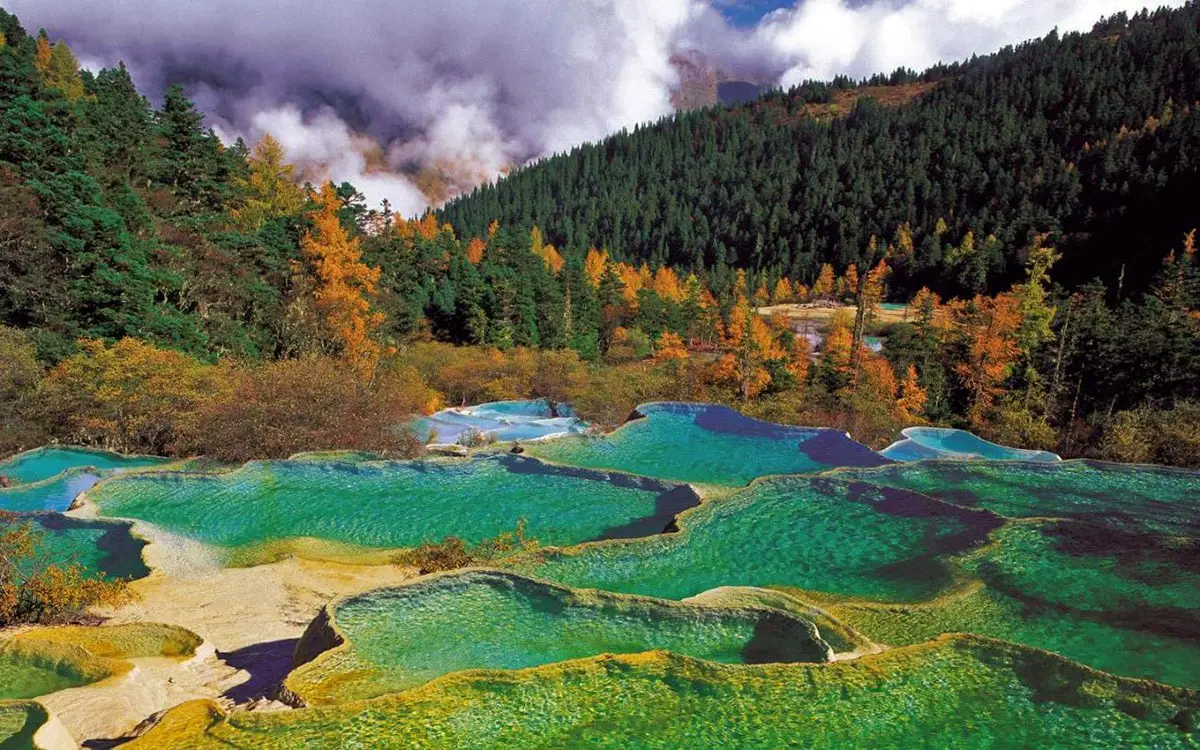World 🢖 Asia 🢖 China 🢖 Chongqing Municipality
Sinkholes 🢔 Caves 🢔 Geological wonders 🢔 Categories of wonders
Wonder
Qingkou tiankeng and waterfalls
 In short
In short
Qingkou tiankeng belongs to the largest sinkholes of the world. This 295 m deep pit is very special due to the fact that it is not created by the collapse of cave room: it is formed by surface water, which still falls inside the tiankeng with impressive waterfalls. The 42 km long, spectacular Er Wang Dong cave starts from this tiankeng.
 45.8%
45.8%
GPS coordinates
Location, address
Name in Chinese
Alternate names
Depth
Volume
UNESCO World Heritage status
Map of the site
If you see this after your page is loaded completely, leafletJS files are missing.
 In detail
In detail
Group of Qingkou tiankengs
More information about tiankengs is in the article about Xiaozhai tiankeng.
Out of 45 – 50 known tiankengs of China (and China has by far the most tiankengs in the world) five belong to the group of Qingkou tiankengs. These are Daluodang, Niubizi, Shiwangdong (Shi Wang), Taipingmiao, and finally – Qingkou tiankeng itself, which is described here.
These tiankengs have formed at the border of Paleozoic sandstone and a thick layer of Lower Ordovician limestone, which is rich with underground streams – tributaries of Muzong River. These underground streams have formed some of the most magnificent caves in the world – such as San Wang Dong and Er Wang Dong caves. In some places, the roof of caves has collapsed, creating sinkholes of gargantuan size – tiankengs.
Erosional tiankengs
Most tiankengs are formed by the collapse of giant cave rooms. But sometimes these giant holes are created by surface water which finds a crack in the limestone and falls down until it reaches the base of the layer. As time goes, the hole is washed out, larger and larger until an enormous hole – tiankeng – is created.
Such tiankengs are called erosional tiankengs. Typically rivers fall IN these tiankengs as spectacular waterfalls and then continue underground, in caves.
Best erosional tiankeng in China
Qingkou tiankeng is a typical erosional tiankeng and most likely – finest one in China. It receives two larger streams – one from the north-west, another – from the east. Both fall down in the sinkhole, each forming some 150 – 200 m tall waterfall. During the rainy periods, the sound of waterfalls in the tiankeng is almost unbearable.
Qingkou tiankeng is 295 – 195 m deep, with almost vertical walls. Area of tiankeng is 40,700 m². It has formed at the area, where sandstone and shale overlay a thick layer of Lower Ordovician limestone. Streams reach here the border where this sandstone ends and starts limestone. In this place has formed Qingkou tiankeng.
It seems that tiankeng was not that deep initially – older caves start from the walls of tiankeng, marking former levels of the bottom of this sinkhole. In total there are dozens of such caves.
Waterfalls form a single stream and disappear in an enormous cave – the giant Er Wang Dong Cave, a section named Tiankeng Express. In the winter the stream almost disappears but in summer, during the rain it can become powerful, with a force of several m³ per second.
History
Most likely local people knew well about this giant hole in the ground – but the scientific world learned about Qingkou tiankeng only on March 25, 2001, when doctor Zhy Xiewen first visited it.
Already in October 2003 Qingkou tiankeng and surrounding landscape – Wulong Karst – were protected as a national geopark. In 2007 it became a part of the UNESCO World Heritage monument – "South China Karst" and since then it is becoming an increasingly popular tourist destination.
Tiankeng and Er Wang Dong cave are explored by Hong Meigui Cave Exploration Society.
References
- Zhu Xuewen, Chen Weihai, Tiankengs in the karst of China. Speleogenesis and Evolution of Karst Aquifers. The Online Scientific Journal. Accessed in the 31st July 2010
- Waltham Tony. The 2005 Tiankeng Investigation Project in China. Speleogenesis.Info. Accessed in the 10th October 2013.
 Linked articles
Linked articles

Caves
Every year there are reported exciting discoveries of new caves and discoveries of new qualities such as cave paintings in the ones known before. But there still is a feeling that our knowledge covers just a small part of all these monuments of nature.
Though, those which are known to us, offer a surprising diversity of unusual features and impressive sights.

Wonders of Asia
Any other continent (and part of the world) seems small if compared to Asia. This refers also to natural and man-made heritage: in Asia are not just thousands of great landmarks, there are found landmarks created by thousands of diverse cultures from ancient Phoenicians to the mysterious small people in the Philippines and eastern islands of Indonesia.

Wonders of China
China has got it all – more than one billion people, a large area, a great and very long history, very distinct and at the same time – very diverse cultures, great and varied nature.
 Recommended books
Recommended books
Karst in China: Its Geomorphology and Environment
This is the first study of the karst areas of China to be carried out by a Western geomorphologist, and almost all the sources are from Chinese works, as yet unpublished in the West. Karst areas are sensitive to environmental influences and Chinese attempts to deal with these are discussed here, as are Chinese methods of studying karst since they differ somewhat from those in the West.

